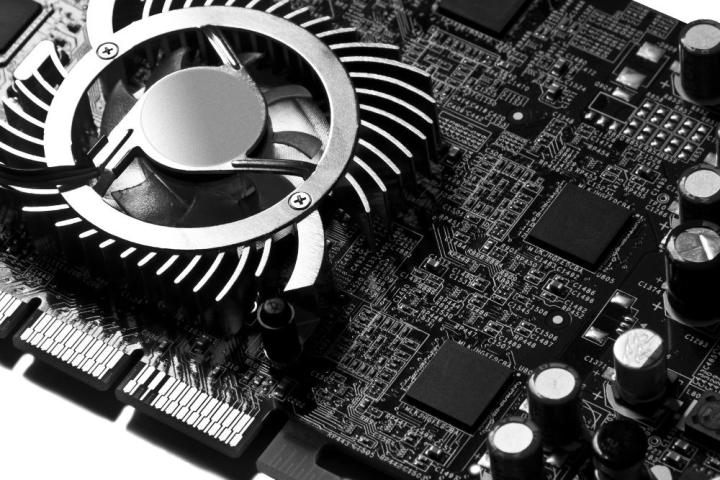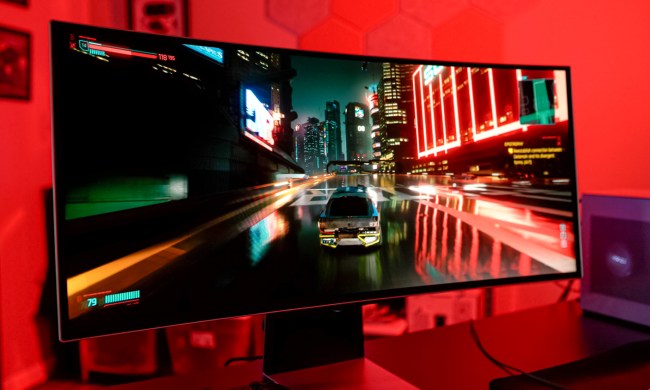
Over the last decade these companies, often known as the red team and the green team, have been locked in a seemingly eternal conflict. Whenever one side gained an edge, the other swiftly responded. No video card remained the obvious king for more than a few months. Gamers had plenty of choice, and could always count on the constant advancement of GPU performance.
It seems the conflict has reached its end.
Nvidia has gained a lasting upper hand on AMD, and gamers have taken notice: In 2014 the former gained 11 percent market share, taken entirely from the red team. Is this really the end of the war — and if so, what will it mean for gamers?
Red team in retreat
Last year’s swing in graphics card sales, found in data from Jon Peddie Research, was dramatic but not entirely unprecedented. AMD’s share of the discrete graphics market started to slide several years ago and has never recovered. 2014 was the largest swing yet, but it was hardly the start of the downward momentum.
Fans of AMD might argue that, in terms of all graphics chips shipped, the company still leads. That’s because it packs a graphics component into its Fusion APUs. These aren’t big moneymakers, though, nor are they great for gaming. And anyone that accepts that measure must then admit that the largest graphics company in the world is actually Intel, which ships integrated graphics with every processor.
JPR’s data isn’t the only point in favor of Nvidia. Steam’s hardware survey has long shown Nvidia to be dominant, and the latest trends only reinforce that position. As of February 2015 only 28.6 percent of Steam gamers have an AMD video card, compared to 51.8 percent for Nvidia, and the red team’s share has decreased from just over 32 percent two years ago.
The problem isn’t entirely performance
Nvidia hardware is cooler and quieter across the board.
Such a large disparity might lead you to think that Nvidia’s hardware is seriously outperforming AMD. Yet reviews indicate that’s not the case. Radeon cards have remained competitive with Nvidia’s lineup because AMD simply cuts prices whenever it appears a card begins to lose value. The Radeon HD 7770 and Radeon R7 260X are great for 1080p gaming and very affordable.
What’s the issue, then? That’s arguable, but two problems stand out. Efficiency is the first. Nvidia has pursued architecture updates aggressively and more quickly placed them in products while AMD, strapped for resources as it tries to compete in both CPU and GPU realms, has fallen back on re-branding existing chips in many of its cards.
The result of this strategy is apparent in power draw. AMD’s R9 290X, a single-GPU powerhouse, has a thermal design power of 250 watts, while the quicker GeForce GTX 980 fits within a 165-watt envelope. The GTX Titan X, meanwhile needs as much power as the R9 290X but is at least 50 percent quicker in most benchmarks. That means Nvidia hardware is cooler and quieter. Gamers may be willing to put up with a card that sounds like a box fan, but most prefer peace if it’s an option.

Features are the second point of difference. Nvidia has consistently rolled out new software and drivers including GeForce Experience, an easy-to-use driver update utility, and ShadowPlay game recording. The green team was also first to embrace frame synchronization with G-Sync, though AMD is catching up with its more open alternative FreeSync. There are some advantages on the red side of the fence, like a very aggressive game bundling program called “Never Settle,” but Nvidia is winning the features war.
No reversal in sight
It’s not unusual for one of these two companies to gain a temporary advantage over the other. There was a time, several years ago, when it appeared AMD was the absolute price-performance victor. Yet there is reason to believe Nvidia’s dominance won’t end soon.
AMD’s plate is full of financial junk food.
At the root, AMD’s problem is everything. It’s suffering across the board, losing money and important staff at a startling rate. The company’s revenue in 2014 was $5.5 billion. That’s a billion more than Nvidia, but the green team isn’t spread as thin and doesn’t compete directly with Intel. That’s probably why AMD lost over $400 million in 2014, while Nvidia made over $400 million in the same period.
AMD’s plate is full of financial junk food. There’s a lot of it, but it provides little substance. Nvidia, meanwhile, is grazing on high-end video cards that provide a nutritious profit. The fact is that companies building cutting-edge hardware need big budgets for research and development, and AMD is struggling in that area.
Not good news for gamers
All of this is bad news for AMD, and bad news for gamers. It seems doubtful that the company will see an epic turnaround soon: the best possible outcome is probably acquisition by a larger company. That might breath new life into Radeon, but the acquiring company could just as easy ditch the desktop GPU business to focus on a trending segment, like mobile.
Whatever happens, Nvidia’s dominance leaves gamers with less real choice. The result of that is obvious in video card prices, which have remained stagnant in recent years. And even the green team has started to release new cards with less vigor than normal, no doubt because the pressure is off. The GTX 900 desktop series, for example, arrived nearly two years after the first GTX 700 desktop card.
If trends continue, the only acceptable option for gaming on the desktop will be an Intel processor with an Nvidia video card. While such hardware will certainly do the job, the lack of competition won’t help the PC platform’s reputation for excessive expense, and may slow the release of affordable cards that can handle 4K gaming.
Players — even those who prefer Nvidia — should pray the red team gets back in the game.





